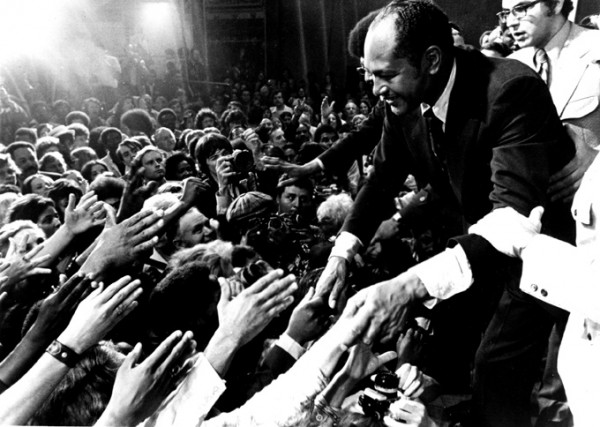Bridging the Divide is a new documentary film that tells the story of former Los Angeles Mayor Tom Bradley. In conjunction with the Pat Brown Institute for Public Affairs, the movie debuted at Cal State LA on August 10th to a full house of Angelenos, including many of the city’s political elite. The film masterfully showed the arc of Bradley’s life and how he transformed LA.
The opening scene showed the flames of the Watts Riots. The tumultuous race relations of midcentury LA were what inspired Bradley to go into politics. He had been frustrated in the LAPD by the institutional racism imposed by Chief William Parker. Bradley quit the LAPD in 1961 after 21 years and then he went to law school.
Bradley was a pioneer in numerous ways. The son of a sharecropper and grandson of a slave, he became the first Black officer in the LAPD to ever earn a position where he supervised white officers. He also spent many years in the Crenshaw District, buying a home in Leimert Park when the area was just being integrated. What was especially groundbreaking about when he became mayor was that it was the first time in American history a Black Mayor came to rise in a city with a non-Black majority.
Bradley served as mayor for five terms from 1973 to 1993. His tenure was in many ways bookended by the 1965 Watts Rebellion and the 1992 Rodney King Uprisings. The narrative showed how Bradley unified a divided city and modernized Los Angeles, laying the groundwork for the 1984 Olympics, a revitalized Downtown and the return of rail transit.
One poignant scene in the film said that the multicultural coalition that elected Bradley in 1973 was the same blueprint Barack Obama used to win the 2008 Presidential election. Bradley’s multicultural coalition included Jewish, Japanese and Latino Angelenos. Scholar Scott Kurashige comments on this in the film and also writes more about this in his book, The Shifting Grounds of Race. In his book, he writes, “Bradley paid conscious attention to the increasing diversity of his local constituency, which he posited as a microcosm of a world marked by rising cultural and economic integration.” George Takei was also a close friend of Bradley and he makes an appearance in the film as well.
The film took seven years to make and was made by Lyn Goldfarb and Alison Sotomayor. They briefly spoke after the screening and then were followed by a lively panel discussion hosted by “Which Way LA’s” Warren Olney. Panelists included the former mayor’s daughter Lorraine Bradley, former Supervisor Zev Yaroslavsky, Supervisor Mark Ridley-Thomas, Congresswoman Judy Chu and celebrated activist Maria Elena Durazo. Lorraine Bradley said that her dad was “the people’s mayor.”
Mark Ridley-Thomas commented on Bradley’s “big heartedness” and his tireless work ethic. Zev Yaroslavsky recalled Bradley’s integrity and personal excellence. Judy Chu noted that Bradley’s footprint created the context for coalition politics in Southern California. She added that the coalition she formed in the San Gabriel Valley was modeled after the example originally mapped by Bradley. Chu also celebrated his efforts to revitalize Downtown Los Angeles.
Above all, each of the panelists agreed that Bradley listened closely to his constituents and colleagues and that his rise to power represented an awakening in the city. Bradley initially came to rise in a much more racist and segregated Los Angeles. His life’s work helped reimagine the city more than just about any Angeleno ever. This new documentary puts Bradley in the proper historical context.

